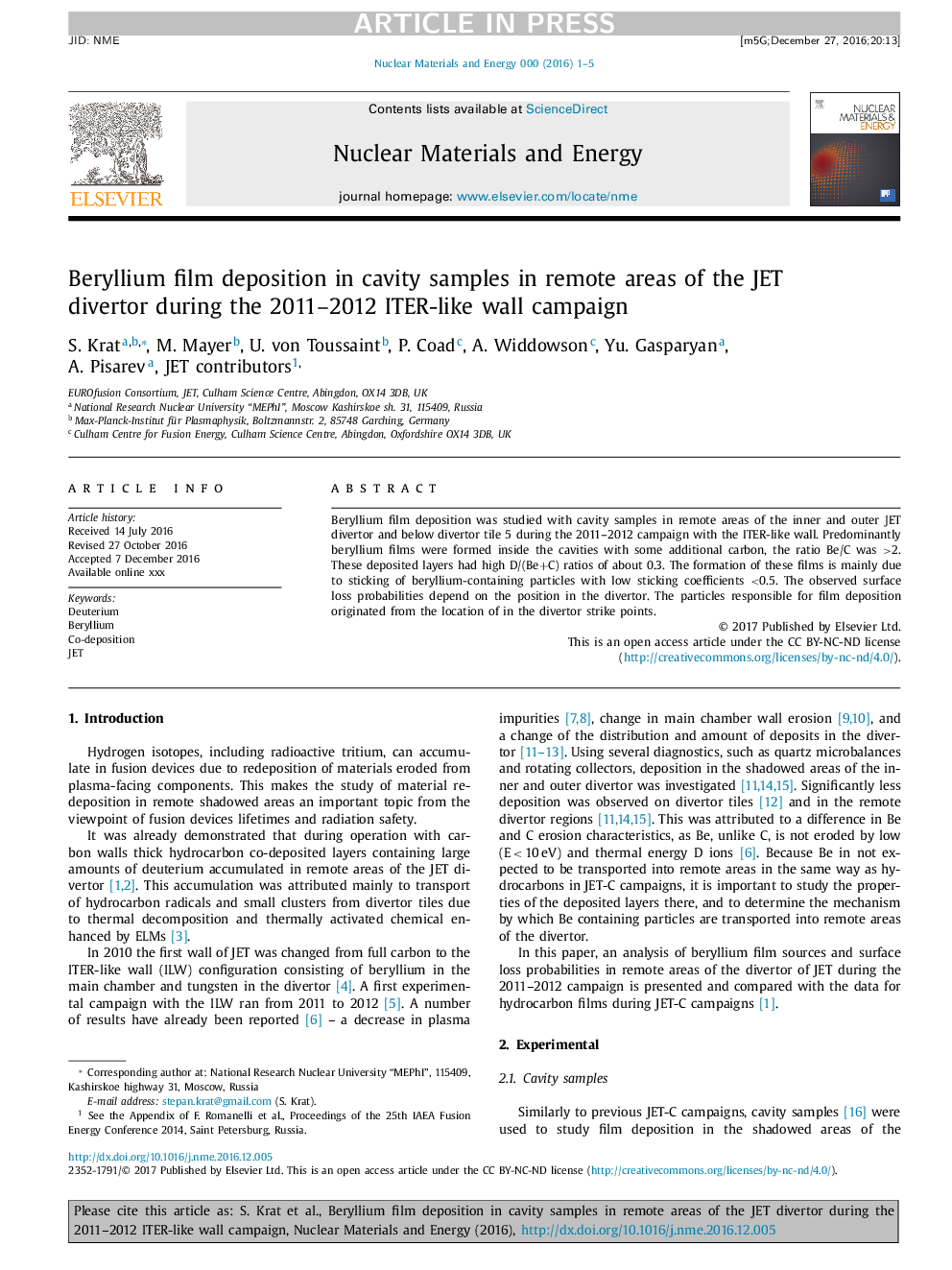| Article ID | Journal | Published Year | Pages | File Type |
|---|---|---|---|---|
| 7987548 | Nuclear Materials and Energy | 2017 | 5 Pages |
Abstract
Beryllium film deposition was studied with cavity samples in remote areas of the inner and outer JET divertor and below divertor tile 5 during the 2011-2012 campaign with the ITER-like wall. Predominantly beryllium films were formed inside the cavities with some additional carbon, the ratio Be/C was >2. These deposited layers had high D/(Be+C) ratios of about 0.3. The formation of these films is mainly due to sticking of beryllium-containing particles with low sticking coefficients <0.5. The observed surface loss probabilities depend on the position in the divertor. The particles responsible for film deposition originated from the location of in the divertor strike points.
Keywords
Related Topics
Physical Sciences and Engineering
Energy
Nuclear Energy and Engineering
Authors
S. Krat, M. Mayer, U. von Toussaint, P. Coad, A. Widdowson, Yu. Gasparyan, A. Pisarev, JET contributors JET contributors,
